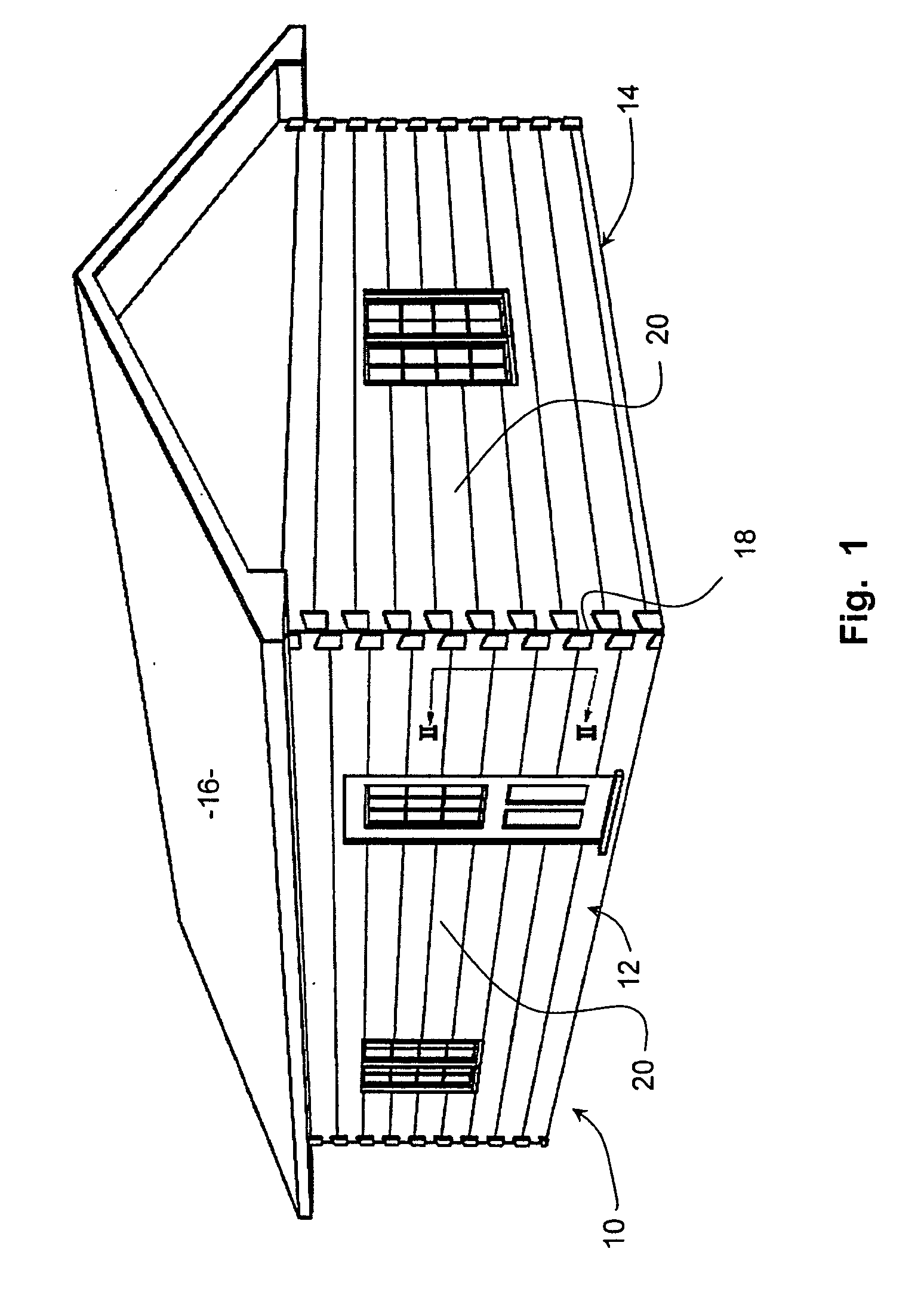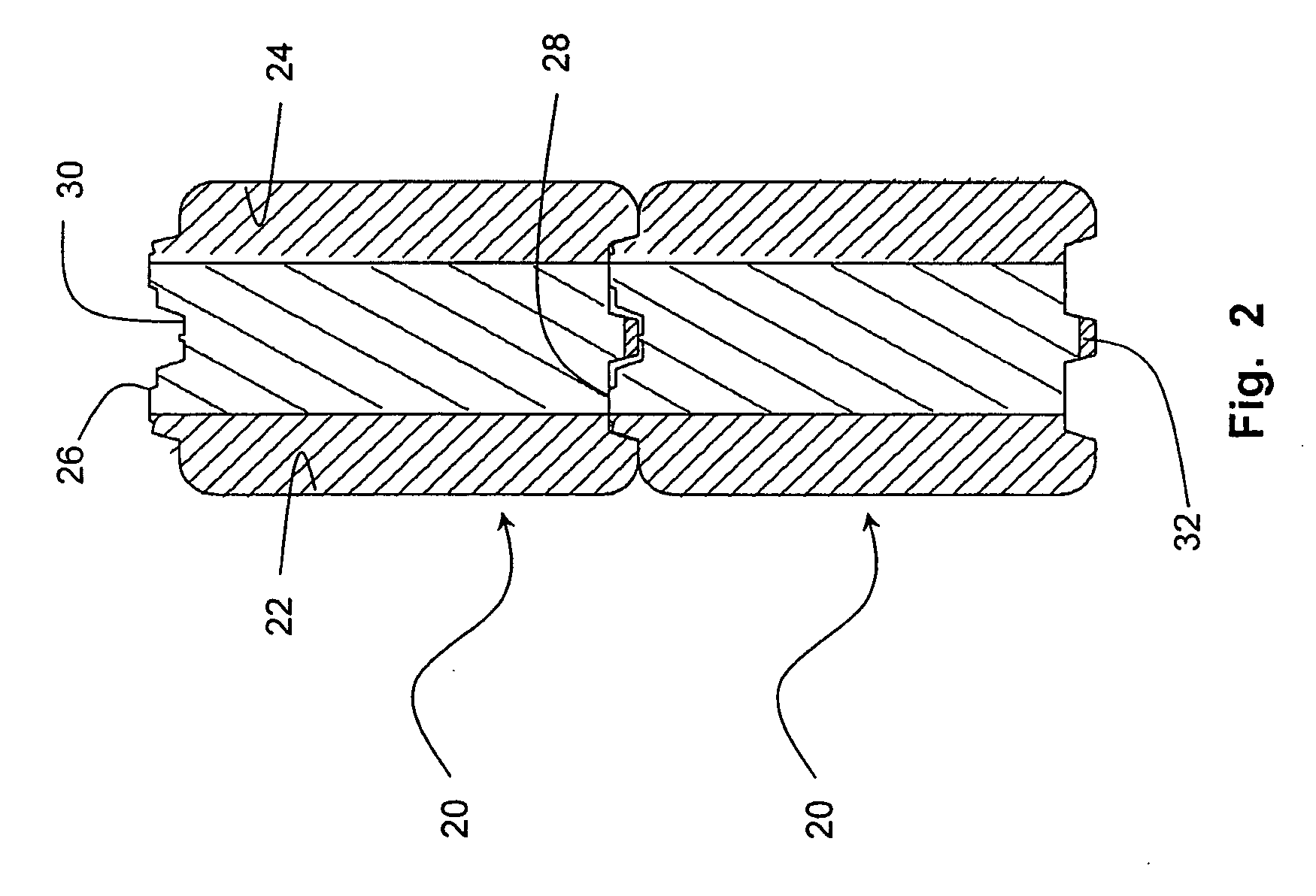Insulated log homes
- Summary
- Abstract
- Description
- Claims
- Application Information
AI Technical Summary
Benefits of technology
Problems solved by technology
Method used
Image
Examples
Embodiment Construction
[0033]Referring therefore to the drawings, in FIG. 1 a house 10 has side walls 12, 14 that support a roof 16. The side walls 12, 14 intersect at a corner 18.
[0034]Each of the walls 12, 14 is formed from a plurality of logs 20 that extend horizontally and are stacked one above another in a vertical direction. As can be seen in FIG. 2, the logs 20 have a pair of oppositely directed surfaces, designated an outer surface 22 and an inner surface 24. The outer surface 22 and inner surface 24 are interconnected by an upwardly directed surface 26 and a downwardly directed surface 28, it being understood that the terms upper and lower refers to the normal orientation of the logs 20 when assembled into a wall 12,14. The upper and lower surfaces 26, 28 are milled to have complimentary profiles 30,32 such that when stacked one above the other, the profile 32 of lower surface 28 is snugly received on the profile 30 of the upper surface 26. Seals may be incorporated between the tongue and groove ...
PUM
| Property | Measurement | Unit |
|---|---|---|
| Fraction | aaaaa | aaaaa |
| Fraction | aaaaa | aaaaa |
| Fraction | aaaaa | aaaaa |
Abstract
Description
Claims
Application Information
 Login to View More
Login to View More - R&D
- Intellectual Property
- Life Sciences
- Materials
- Tech Scout
- Unparalleled Data Quality
- Higher Quality Content
- 60% Fewer Hallucinations
Browse by: Latest US Patents, China's latest patents, Technical Efficacy Thesaurus, Application Domain, Technology Topic, Popular Technical Reports.
© 2025 PatSnap. All rights reserved.Legal|Privacy policy|Modern Slavery Act Transparency Statement|Sitemap|About US| Contact US: help@patsnap.com



